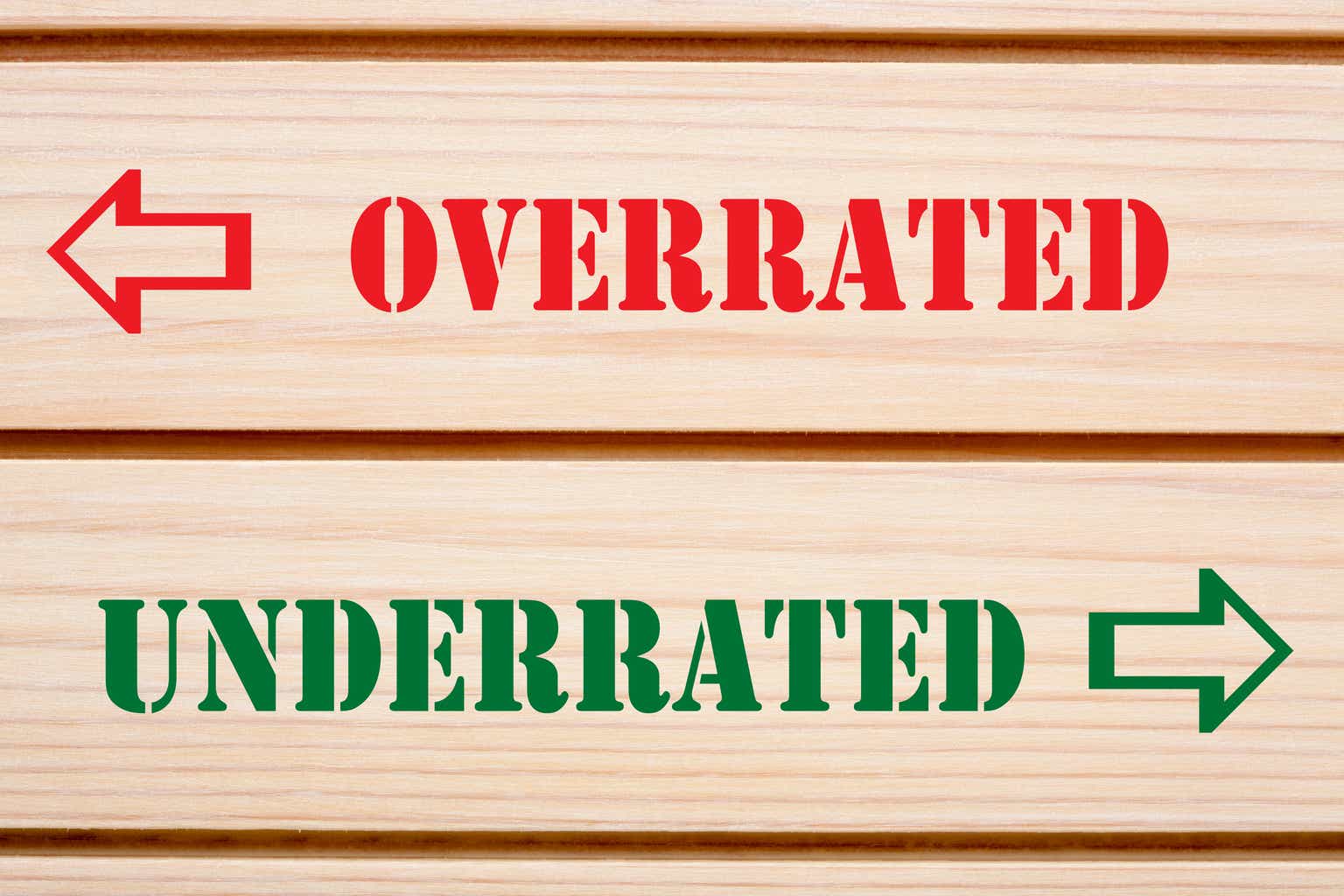High-yield stocks are wonderful vehicles for building a passive income machine over the long term. Between the attractive current dividend yields, the likelihood for additional passive income growth, and the potential that the valuation multiple will expand, give investors a powerful combination of passive income and total return. As I detailed in a recent post, my strategy for investing in high-yield stocks has enabled me to achieve significant long-term total return outperformance relative to both the S&P 500 (SPY) as well as the broader dividend growth (SCHD) and high-yield (SPYD) sectors.
That being said, while high-yield stocks can be phenomenal wealth compounders, there are also plenty of high-yield stocks that can be wealth destroyers. Worse still, there are several of these stocks that have been around a long time and perennially misallocate capital, yet still attract large and loyal followings. Meanwhile, there are other high-yield stocks that have very attractive total return outlooks, yet investors seem to routinely underappreciate them for various reasons, including past issues that the companies have clearly left behind them.
In this article, I will highlight two of each of these types of high-yielding stocks.
Overrated High-Yield Stock #1: AT&T (T)
T is loved by many retirees for its fairly attractive and well-covered dividend. With a 6.5% NTM dividend yield and an expected 51% dividend payout ratio in 2024 backed by an investment-grade credit rating and a fairly stable cash-flowing business model, investors look to T as a source of stability and substantial passive income.
That being said, T also has a lot of negatives that often get overlooked in favor of the aforementioned headline dividend story:
- T has grossly misallocated shareholder capital over the years on foolhardy acquisitions, leading to massive total return underperformance, very low returns on invested capital, a ballooning debt burden, and ultimately a dividend cut.
- As a result of its past misadventures, T management is now having to focus on paying down debt and investing in its core business in order to shore up its competitive position. This starves the company of the cash needed to grow the dividend at a meaningful pace.
- Moreover, T is struggling to generate meaningful top and bottom-line growth.
As a result, as it sits today, while T offers a fairly attractive current yield, its dividend growth is likely going to meaningfully lag behind the rate of inflation for the foreseeable future. Moreover, its EV/EBITDA ratio of 6.58x sits slightly above its historical average of 6.46x, despite interest rates being at elevated levels and the stock sporting anemic growth. As a result, we see very limited upside for the stock price for the next several years, limiting the total returns to the 6.5% dividend yield and potentially an additional 0.5%-1.5% per year in growth. As a result, we rate T a Hold and think it is a highly overrated high-yield stock.
Overrated High-Yield Stock #2: 3M (MMM)
MMM is another overrated high-yield stock. Its 6.6% NTM dividend yield, reasonable 77% expected payout ratio for 2024, strong credit rating, 66-year dividend growth streak, and well-diversified and competitively-positioned business model make it appear to be a compelling dividend growth investment.
However, there are several reasons why we think it is highly overrated by many investors who simply look at its surface-level results:
- Its earnings per share have not grown at all since 2016 and, in fact, its expected 2024 earnings per share is expected to be only 0.6% higher than what it generated in 2016. Over the past decade, it has grown its earnings per share at a meager 0.9% CAGR, effectively rendering it a lost decade for the stock.
- Unsurprisingly, dividend growth has slowed to a crawl as the payout ratio has soared from 46% to 74% over the past decade. In 2023, the dividend increased by a meager 0.3%, and a similarly slow rate of dividend growth is expected for 2024.
- These token increases have weighed on the stock’s valuation, with the stock returning -4% total returns over the past decade at the same time that SPY has returned 236% total returns. This shows just how much of a laggard MMM has been.
- While MMM does offer an attractive current dividend yield, the future outlook for the business remains quite abysmal, with analysts forecasting a -1.4% earnings per share CAGR through 2028. This means that dividend growth is also unlikely to accelerate at all for the foreseeable future.
When combined with continued uncertainty surrounding the company’s remaining legal liabilities, there just isn’t enough to be excited about beyond the 6.6% dividend yield to make me want to buy this Dividend King.
Underrated High-Yield Stock #1: W. P. Carey (WPC)
WPC is a stock that is in the doghouse with many investors right now due to the way they exited their office portfolio. In particular, their decision to upend their 28-year dividend growth streak as part of this strategic pivot upset many income investors who bought the stock for its stable and steadily rising dividend payout.
While I certainly empathize with the sentiment of betrayal that many investors feel – and in fact vented my frustrations with this decision in an article that analyzed that move – I think that investors are underappreciating WPC’s current strengths:
- It has a portfolio that is now nearly office-free and instead consists primarily of high-quality industrial properties along with mission-critical retail assets and some storage properties. This sets it up well for long-term growth and stability and should ultimately command a higher valuation multiple for the REIT.
- WPC has a BBB+ credit rating that was fairly recently upgraded by S&P. Moreover, its office sale proceeds have given it significant amounts of liquidity, enabling it to navigate the current elevated cost of capital environment quite well and fund its attractive acquisition pipeline accordingly.
- WPC’s valuation is very attractive, with a 6.2% NTM dividend yield that is well-covered by a very stable cash flow stream and a high-quality real estate portfolio that is currently priced at a 6% discount to NAV (despite historically trading at a ~10% premium to NAV).
- With a right-sized payout ratio, a strong portfolio, an attractive long-term acquisition pipeline, and a large percentage of its rent coming from CPI-linked escalators, WPC is poised to see its dividend per share growth accelerate in the coming years.
Between a likely ~15% expansion in its P/NAV multiple moving forward (if not more as the market potentially rewards it for having a stronger portfolio and faster dividend growth), the 6.2% dividend yield, and likely mid-single-digit AFFO growth (a 4.9% CAGR is forecasted by the analyst consensus through 2027), WPC is well-positioned to deliver double-digit annualized total returns.
Underrated High-Yield Stock #2: Kinder Morgan (KMI)
KMI is another stock that is in the doghouse with many investors due to its past history of slashing its dividend deeply and never fully restoring it. While this was indeed a painful event for many investors, it is important to keep in mind that it was in the past and the company underlying the stock has dramatically improved since then:
- Its leverage ratio has plunged from 5.3x in 2016 to 4.2x at the end of 2023 and is expected to fall further to 3.9x by the end of this year (compared to a 4.5x leverage ratio target).
- The company has worked through numerous pipeline contract expirations in recent years and now has a very stable cash flow profile from long-dated contracts and regulated assets in its portfolio.
- Between its leverage capacity, near 2x DCF coverage ratio of its dividend, and significant growth investment opportunities, KMI’s growth profile looks increasingly attractive.
- When combined with its 6.2% dividend yield and 9.2x EV/EBITDA (which is well below its historical average of 12.2x), KMI’s total return profile looks very attractive.
Investor Takeaway
High-yield investing can be a highly profitable way to build wealth and achieve financial freedom. However, it is important to look beyond attractive dividend yields and popular names when picking stocks. Instead of chasing stocks like T that continue to be burdened by numerous headwinds and have weak growth outlooks, I greatly prefer to invest in stocks like WPC and KMI that have similarly strong current dividend yields and balance sheets, but have much brighter long-term growth prospects.
Read the full article here






